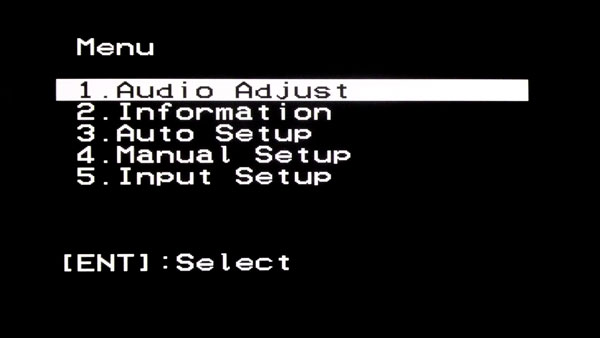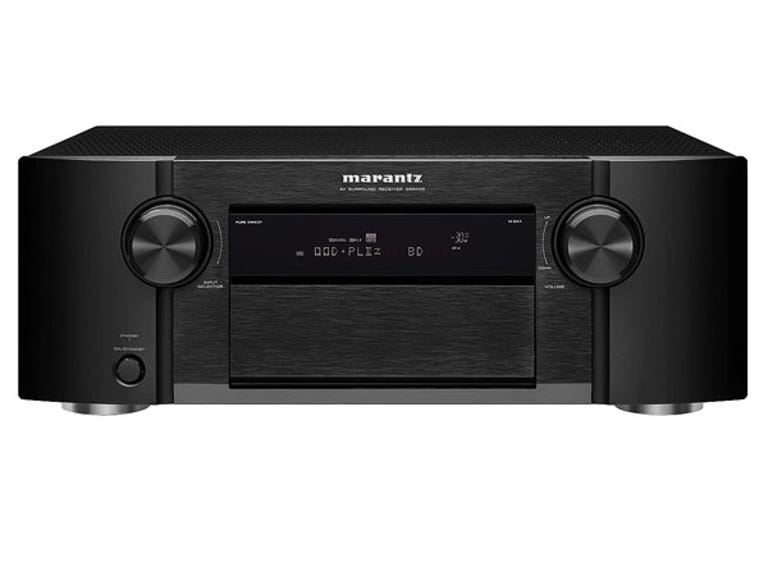 Why You Can Trust CNET
Why You Can Trust CNET Marantz SR5005 review: Marantz SR5005
The Marantz SR5005 receiver performs well with music and movies, but doesn't do enough for the price.
Marantz has long had a reputation for "high-end" equipment, and this was cemented last year when it decided to drop budget receivers from its range. As a result of this, the SR5005 is now the company's entry-level model.
The Good
The Bad
The Bottom Line
Design
Marantz receivers have always been as much about the aesthetics of the product as it has been the sound. Marantz products seem to ooze sophistication, and its latest designs are quite desirable.
We were quite impressed by the looks of Pioneer's LX83, but where that receiver was quite "masculine" the SR5005 is quite a bit softer. The edges are curved and constructed from moulded resin, while the front of the unit is brushed aluminium. Stare at its segmented fascia and two control knobs and it could start to look like Wall-E. Oh, that's just us? Best listen to it instead.
The learning remote control is fairly basic looking and, unfortunately, it isn't the easiest to use. For example, it's hard to tell which mode it's in most of the time and have to keep pressing the "Amp" button to get any function to work. While the remote is backlit, you need to press "Set" and "On" together to turn it on; something you'd only know how to do from reading the manual.
Features
The Marantz SR5005 features a 7.1-channel amplifier with 100W of power per channel. The receiver will decode all of the latest sound formats, and it supports 3D equipment and the Audio Return Channel (ARC) built into new TVs.
The system features a USB port for connecting an iPod, iPhone or other MP3 player, and Marantz also offers an optional Bluetooth adapter for connecting wirelessly. If you want Apple's AirPlay or other networking features, you'll have to purchase either the NA7004 network player or trade up to the flagship SR7005 receiver.
Further connectivity includes four HDMI inputs, three components and five composite inputs on the video side. For audio you get six analog stereo, 7.1 analog in/out, three digital opticals and two digital coaxial. The amp also features an Audyssey MultEQ microphone.

We thought black-and-white GUIs died with the VCR (Credit: CBS Interactive )
When it comes to video-related features, the company is a little behind its competitors, especially when it comes to the user interface — it's black and white. Marantz hasn't changed this in the past eight years. Like most modern receivers, the Marantz can also upscale incoming video to 1080p.
Performance
When it comes to building a home theatre receiver, there are three paths you can choose from: music, movies or a compromise between both. In the past the divisions were quite obvious, companies such as Sony and Onkyo favoured brash surround models poor with music, while Rotel and Marantz chose music first. However, models such as the Sony STRDA5300 and Onkyo TX-SR578 have shown that these Japanese companies can do music as well. Meanwhile, based on the performance of the SR5005, we can say that it's business as usual for the brand.
We did have some problems early on trying to set up the receiver via the included Audyssey microphone, and recommend doing the sound set-up yourself if you have a few minutes to spare. The set-up routine somehow managed to set the volume of the centre channel half as loud as the rest of the system, making actors sound like they're mumbling more than Sly Stallone with a hangover ... eating water crackers ... in space.
After adjusting the centre speaker levels, we then tested the receiver with both the auto-calibrated settings and after a bit of DIY sound level meter waving. Our experience with these calibration routines has been that they're good for setting up surround sound but poor with music. In this case, it turned out to be poor at both.
With Spider-man 3 in the Oppo BDP-83, we found that our manual setting was able to create a more cohesive sound space with each speaker gelling with its neighbour much better. Take the time to do it yourself and the Marantz rewards with a rich bubble of sound with excellent effect steering.
Switching to music and we found that the receiver was competent though not outstanding. Comparing the on-board sound to our outboard Arcam rDAC, the Marantz lacked the dynamic punch of the DAC, though it was better at reigning in the bassline from Nick Cave's "Red Right Hand".
With the Arcam, the vocals were easily identifiable as their own instrument in Jonsi's "Animal Logic", but when the Marantz was left to decode the file, the vocals got lost in the hash surrounding them. But when fed a decent source like the Arcam, the Marantz is able to deliver the sonic results without making any embellishments of its own.
Like many A/V amps, the Marantz has a shallow sweet spot, while others, such as the Sony STRDA5500, are more holographic when sitting on a different part of the couch.
Video switching was a small concern with the SR5005 as it could take two or three seconds to switch between sources. Just enough to miss that winning goal. Apart from that though, the receiver stayed out of the way of video content with no visible smearing on video from SD or HD sources — a typical weakness of A/V upscalers. We also appreciated the ability to turn the scaler off completely as well.
Conclusion
Has Marantz's move away from the bottom paid off? Not entirely. You can find better features and performance on amps two thirds of the price. Things move fast in the A/V world and while companies like Rotel can rely on sound quality rather than cutting-edge kit, in the case of the Marantz the company is sitting on the fence and not providing for features or performance. What the SR5005 does it does well, but we'd like to see a bit more bang for the buck.


